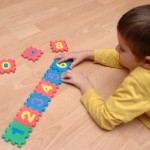Different Methods Of Observing Children
 To ascertain if the child is behaving in a normal manner and is not suffering from any genetic problem or deformity, it is necessary to observe each and every action of the child. The observation starts with the parents observing each small action of the child. It is not necessary that the child should be aware of the fact that he is being observed by someone. It is better that the child is unaware otherwise he is likely to get cautious and will not behave in a natural manner.
To ascertain if the child is behaving in a normal manner and is not suffering from any genetic problem or deformity, it is necessary to observe each and every action of the child. The observation starts with the parents observing each small action of the child. It is not necessary that the child should be aware of the fact that he is being observed by someone. It is better that the child is unaware otherwise he is likely to get cautious and will not behave in a natural manner.
By observation, the observer ascertains and evaluates the development of the child. The first method of observation is informal manner, in this method a person observes the child in the classroom or in the playground in his natural surroundings. Teachers generally perform this duty. They will observe each and every child playing in a group or individually when in the playground and will also observe the child in class to ascertain his dedication to studies. By this way the observer gathers a lot of information as to the way the child behaves, or asks questions or how he coordinates things he is supposed to do, and most important, as to how he manages to solve problems he faces.
It is essential that the observer maintains a record of the child to ascertain level of growth and development over a period of time. This record can be used to compare the performance of the child with other peers of the same age and level of understanding. The specific emphasis should be on social behaviour of the child, learning and motor development with age.
The other level of observation is scientific evaluation. This is generally done by an expert who may be a doctor or an expert social worker dealing with children, for this evaluation scientific method is used. Researchers have devised evaluation checklists to be completed for evaluation of the child. These need to be completed.
There will be children from diverse backgrounds in any group and it has to be seen if there is a relationship concerning physical parameters like weight, height, build etc. A mean or average has to be worked out for a group and that will represent the whole group. This will show the tendencies most prevalent for that group. For evaluating each child, it will have to be seen how much he differs from this average. This method is effective for studying linguistic development.